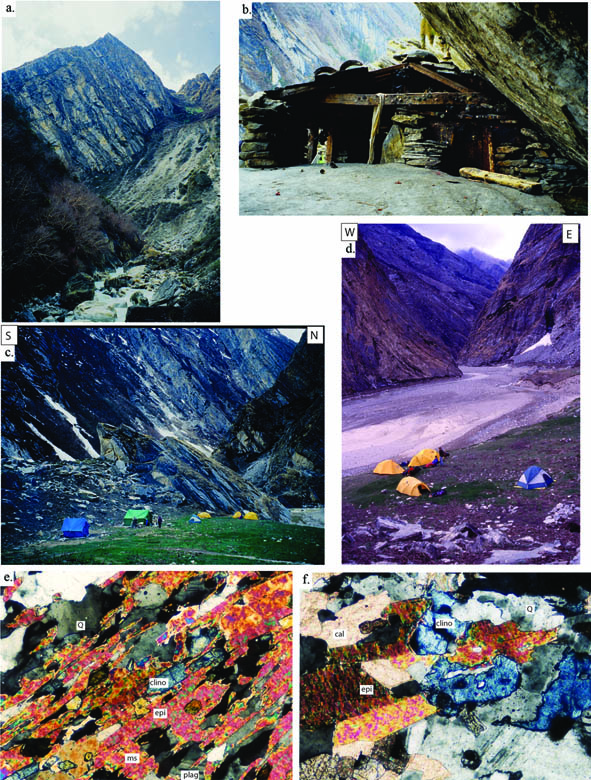DAY 12. TH rocks
North of the basal TH rock unit, garnet-mica schist (quartz + biotite + muscovite ± garnet ± tourmaline) is banded with leucocratic granite for ~1 km (Fig. 19a). Northward, the garnet-mica schist is interbedded with pink and green coarse-grained quartzite with micaceous, calcsilicate, and phyllitic beds. This transition may be the Silurian to Cretaceous terrigenous and calcareous sediment of the upper part of the TH as seen in central Nepal (Colchen et al., 1986). The ability to hike northward from this camp is controlled by the condition of the trails and the amount of snow. Camp in the same location at high camp (Camp 12 on Fig. 2).
Figure 19. TH rock unit

(a) Pelitic schist interbedded with leucocratic granite in TH. Cliff is several hundred meters high. (b) Shrine along the trail in the TH. Moderately north-dipping foliation in the Tethyan strata is visible at right. (c) Highcamp in the TH rock. View is toward the west (N29°52’ 19.4”; E81°10’16.1”; 11987±109’). (d) Highcamp in the TH rock. View is toward the north up the canyon toward Tibet. (e) TH photomicrograph of calcsilicate rock shows clinozoesite (clino), epidote (epi), muscovite (ms), plagioclase (plag), quartz (Q). Field of view is ~2.2 mm. (f) TH photomicrograph.